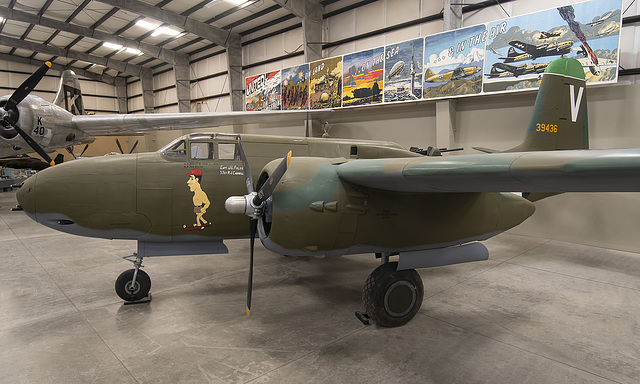Douglas A-20G
Douglas A-20G Havoc
Initial design work for the A-20 began in 1936 as a private venture of the Douglas Company to design a light attack and reconnaissance aircraft. Work was delayed by a series of major design changes that increased the size of the aircraft, gave it larger engines and focused the design as a bomber. First flown in October 1938 the aircraft attracted the interest of the French Air Force and the first orders actually came from France rather then the U.S. Army. France and Belgium briefly used the aircraft before those countries fell to the Germans. Many of the aircraft were diverted to Britain where they were operated under the names Boston and Havoc. The U.S. Army adopted the British name Havoc when they began receiving their A-20s after 1939. The A-20G was the most produced version of the Havoc and was optimized for low altitude attacks using a battery of six nose mounted machine guns and parachute equipped bombs called “parafrags.”
| Wingspan | 61 ft 4 in. |
Wingspan |
| Length | 48 ft |
Length |
| Height | 17 ft 7 in. |
Height |
| Weight | 24,127 lbs (loaded) |
Weight |
| Max. Speed | 317 MPH |
Maximum Speed |
| Service Ceiling | 23,700 ft |
Service Ceiling |
| Range | 2,100 miles |
Range |
| Engines | Two Wright R-2600-23 radials with 1,620 horsepower each |
Engines |
| Crew | 2 |
Crew |
Manufacturer
Douglas
Markings
89th Bombardment Squadron, 3rd Bombardment Group, Fifth Air Force, Nadzab, New Guinea, 1944
Designation
A-20G
Serial Number
43-9436

